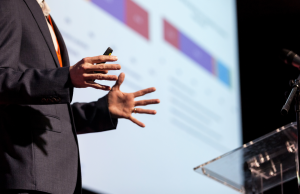The coronavirus pandemic changed, or even eliminated, fundraising mechanisms. Live events, in particular, were hit especially hard. But peer-to-peer fundraising, a comparatively new strategy, has flourished during the crisis.
During COVID’s first wave, March 17-31, 2020, a selection of German nonprofits realized a 530% spike in fundraising, a level that has only partly receded, according to How did the COVID-19 crisis change the social media peer-to-peer fundraising landscape?, a paper from Beatrice Martin and Christian Schlereth, both of the Vallendar, Germany-based WHU-Otto Beisheim School of Management.
The boom was partly fueled by new fundraising mechanisms coming online. Enhancements from Facebook now allow registered nonprofits to reach beyond their networks by attracting potential donors who search for causes. The authors cited statistics from Nonprofit Tech for Good indicating that 44% of respondents to a European survey had used Facebook’s giving tools in 2019, up from 16% during the previous year. Additionally, more than three quarters (76%) of the top nonprofit organizations within Germany used Facebook as a communications tool during 2019.
Use of Facebook tools was boosted by a one-click mechanism that allows fundraisers to “Activate Facebook fundraisers,” according to the study’s authors. The barrier for an individual Facebook user to create a fundraiser is equally low, with pre-populated yet customizable forms allowing users to tailor fundraisers to their own life events, such as birthdays.
Visibility on Facebook (and by extension other social networks) appears to play a significant role in peer-to-peer fundraising success. As the authors note, “the larger the donation volume for the non-profit [sic] and the higher the number of likes of its Facebook page, the more likely it is to have observed an increase in fundraiser numbers during the COVID-19 crisis… Thus it is clear that being active on Facebook pays off for an NPO.”
The authors went on to write that nonprofits shouldn’t wait until a crisis to enhance their social media presence. The more active nonprofits are in creating active communities on social media platforms, the more likely they are to have a stable fundraising base that can compensate for losses from other channels during a crisis.
Peer-to-peer fundraising is especially important during crises, when interpersonal contact, supply chains and the ability for nonprofits to deliver benefits are often interrupted. These crises may help bring immediacy to peer-to-peer asks: unlike solicitations during normal times, when a crisis’ impact is directly felt by a potential funder, there is more of an emotional urgency to the ask, and the ask becomes more effective.
According to the report authors, this personalized risk phenomenon helps explain why, despite the lessened intimacy of online efforts, peer-to-peer digital fundraising during the coronavirus pandemic has flourished: the less-powerful asks of online solicitations (compared with live events) are balanced by a heightened perception of personal risk among the funders.











